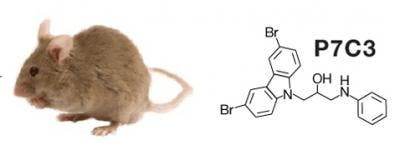
A group of scientists from the University of Texas Southwestern Medical Center discovered a new chemical compound that helps newborn neurons grow into mature brain cells called P7C3. This particular chemical makes new neurons grow in the part of the brain that is integral to learning and memory! This means the research, funded in part by the National Institutes of Health, might lead to a treatment for Alzheimer’s disease thanks to P7C3’s neuroprotective mechanism.
The discovery was made after researchers infused lab mice with 1,000 different chemicals into their brains, systematically. “It was blind luck,” bluntly admit the researchers from the University of Texas Southwestern (UTS).
“This neuroprotective compound, called P7C3, holds special promise because of its medication-friendly properties,” explained Steven McKnight, Ph.D., who co-led the research with Andrew Pieper, M.D., Ph.D., both of University of Texas Southwestern Medical Center, Dallas. “It can be taken orally, crosses the blood-brain barrier with long-lasting effects, and is safely tolerated by mice during many stages of development.”
Various tests were made to see whether P7C3 can actually help stimulate the growth of new neurons, as well as the preservation of old neurons (this could in turn help aging people cope with dying brain cells). Researchers tested the chemical on mice carrying a genetic mutation that renders them almost completely incapable of producing new neurons in the dentate gyrus region – a perfect candidate. What happened next? Well, not only did new neurons form, but electrophysiological recordings also showed that processing in the dentate gyrus had been restored. “Sure enough, we had evidence that you can actually create new neurons that work,” McKnight said.
“This striking demonstration of a treatment that stems age-related cognitive decline in living animals points the way to potential development of the first cures that will address the core illness process in Alzheimer’s disease,” said NIMH Director Thomas Insel, M.D.
P7C3 is indeed a truly remarkable discovery, but scientists still know very little about how P7C3 works exactly, but further years of research and tests will follow, and a miracle drug might finally be developed. [via physorg.com]



